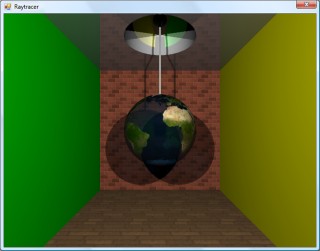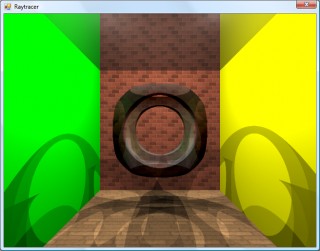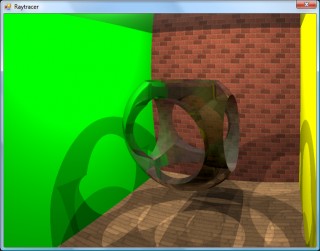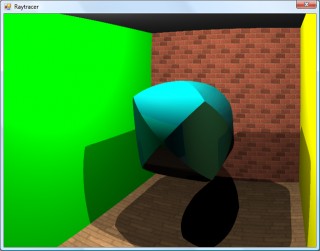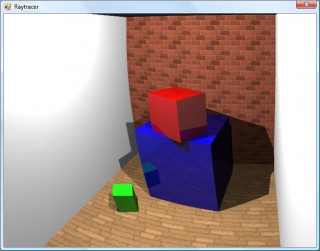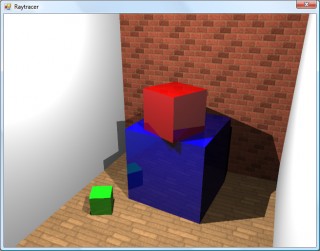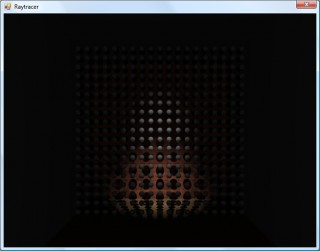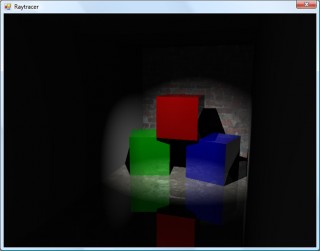CSG, fisheye and spotlights.
Monday, 5th May 2008
One way of constructing solids is to use a method named constructive solid geometry (or CSG for short). I added two simple CSG operators - intersection and subtraction - that both take two surfaces and return the result.
In the above image, the surface that makes up the ceiling is created by subtracting a sphere from a plane. Of course, much more interesting examples can be created. For example, here is the surface created by taking a sphere and subtracting three cylinders from it (each cylinder points directly along an axis).
One problem with the camera implementation was that it couldn't be rotated. To try and aid this, I used a spherical to cartesian conversion to generate the rays - which has the side-effect of images with "fisheye" distortion.
The above left image also demonstrates a small amount of refraction - something that I've not got working properly - through the surface. The above right image is the result of the intersection of three cylinders aligned along the x,y and z axes.
To try and combat the fisheye distortion, I hacked together a simple matrix structure that could be used to rotate the vectors generated by the earlier linear projection. The result looks a little less distorted!
The final addition to the raytracer before calling it a day was a spotlight. The spotlight has an origin, like the existing point light - but it adds a direction (in which it points) and an angle to specify how wide the beam is. In fact, there are two angles - if you're inside the inner one, you're fully lit; if you're outside the outer one, you're completely in the dark; if you're between the two then the light's intensity is blended accordingly.
In the above screenshot, a spotlight is shining down and backwards away from the camera towards a grid of spheres.
If you're interested in an extremely slow, buggy, and generally badly written raytracer, I've uploaded the C# 3 source and project file. The majority of the maths code has been pinched and hacked about from various sites on the internet, and there are no performance optimisations in place. I do not plan on taking this project any further.
Building and running the project will result in the above image, though you may well wish to put the kettle on and make yourself a cup of tea whilst it's working. ![]()
